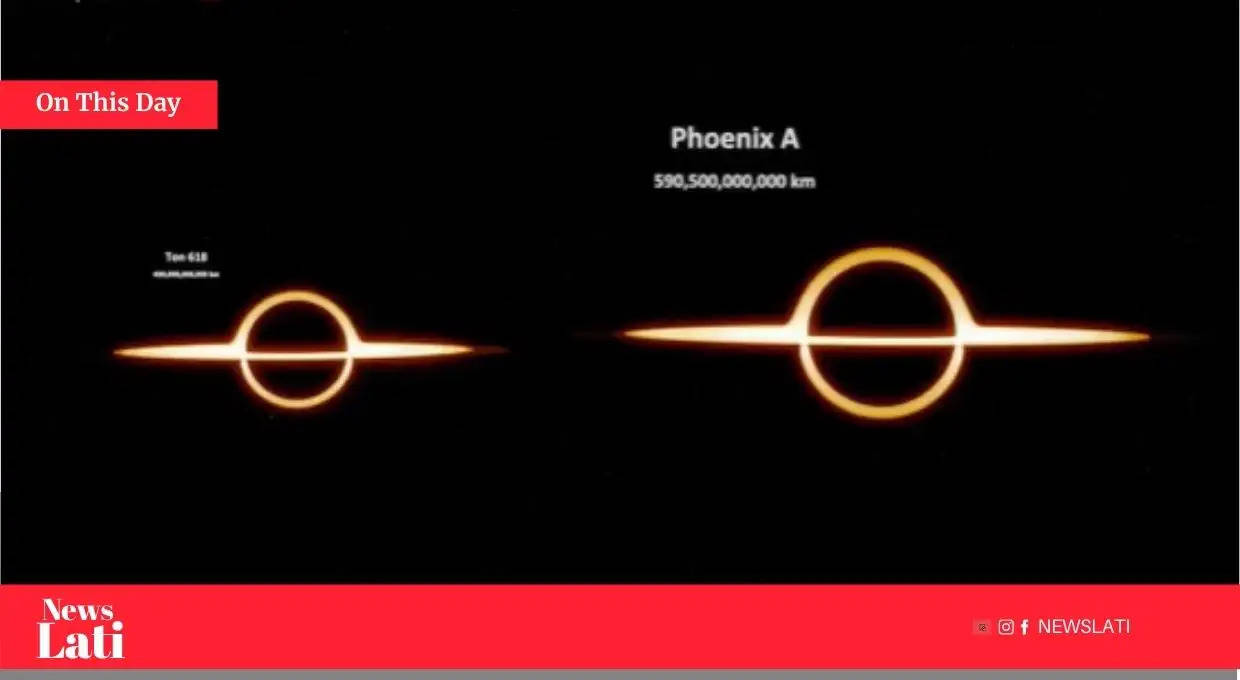Phoenix A: The Cosmic Behemoth Redefining Supermassive Black Holes

-
Phoenix A, with a mass of approximately 100 billion suns, surpasses TON 618 as the largest known black hole.
-
Located in the Phoenix Cluster, this black hole's immense scale surpasses entire galaxies, including the Triangulum Galaxy's mass.
-
Its event horizon stretches to a colossal 3,900 astronomical units, dwarfing solar system scales.
-
Phoenix A could be classified as a "stupendously large black hole," suggesting it might be a primordial entity.
-
The black hole's growth rate adds 60 solar masses per year, highlighting its active and dynamic nature.
In a significant leap forward for our understanding of the cosmos, astronomers have recently identified Phoenix A, a supermassive black hole that redefines the limits of scale and mass in the universe. Situated at the core of the Phoenix Cluster, roughly 5.7 billion light-years away from Earth, Phoenix A challenges our previous notions about what constitutes the largest celestial objects in existence.
Until recently, TON 618 held the title for the universe's largest known black hole, with a mass of about 66 billion times that of our Sun. However, Phoenix A has eclipsed this record, boasting an estimated mass of around 100 billion solar masses, possibly even more, as precise measurements via orbital methods have yet to be conducted. This incredible mass makes Phoenix A 24,100 times heavier than Sagittarius A*, the black hole at the heart of our Milky Way, and significantly, twice the mass of the entire Triangulum Galaxy, including its dark matter halo.
The physical scale of Phoenix A is equally staggering. Its Schwarzschild diameter, or the size of its event horizon where escape velocity exceeds the speed of light, stretches to an astonishing 590.5 billion kilometers. To put this into perspective, this diameter is roughly 100 times the distance from the Sun to Pluto, encapsulating an area vast enough to dwarf our entire solar system several times over. If one were to travel around the circumference of this black hole's event horizon at the speed of light, it would take approximately 71 days and 14 hours to complete the journey.
Phoenix A is not just large; it's actively growing, accreting mass at an impressive rate of 60 solar masses per year. This accretion process suggests that Phoenix A is in an active phase, potentially powered by a massive accretion disk where matter spirals in, heats up, and emits intense radiation, making it a beacon in the cosmos.
The implications of such a massive and growing black hole are profound. Phoenix A might fit into a proposed category known as "stupendously large black holes" (SLABs), which are thought to be primordial in nature, possibly formed shortly after the Big Bang from direct collapse of massive gas clouds or the merging of smaller black holes in the early universe. These SLABs could challenge the theoretical mass limits for luminous, accreting black holes in spiral galaxies, which are believed to top out at around 50 billion solar masses.
The discovery of Phoenix A not only expands our understanding of black hole masses but also poses new questions about the formation mechanisms of these cosmic giants. Could Phoenix A be a relic from the universe's infancy, or is its growth a result of numerous mergers over cosmic timescales? Its existence suggests that there might be more to learn about the dark corners of the universe, where black holes can grow beyond what was previously thought possible.
Astronomers continue to study Phoenix A, using data from various space observatories to piece together its history and impact on the Phoenix Cluster. This research could unlock secrets about the early universe, galaxy formation, and the ultimate fate of supermassive black holes. As Phoenix A continues to feed on its galactic environment, it stands as a testament to the dynamic, ever-evolving nature of the cosmos, pushing us to reconsider the boundaries of astrophysics.
